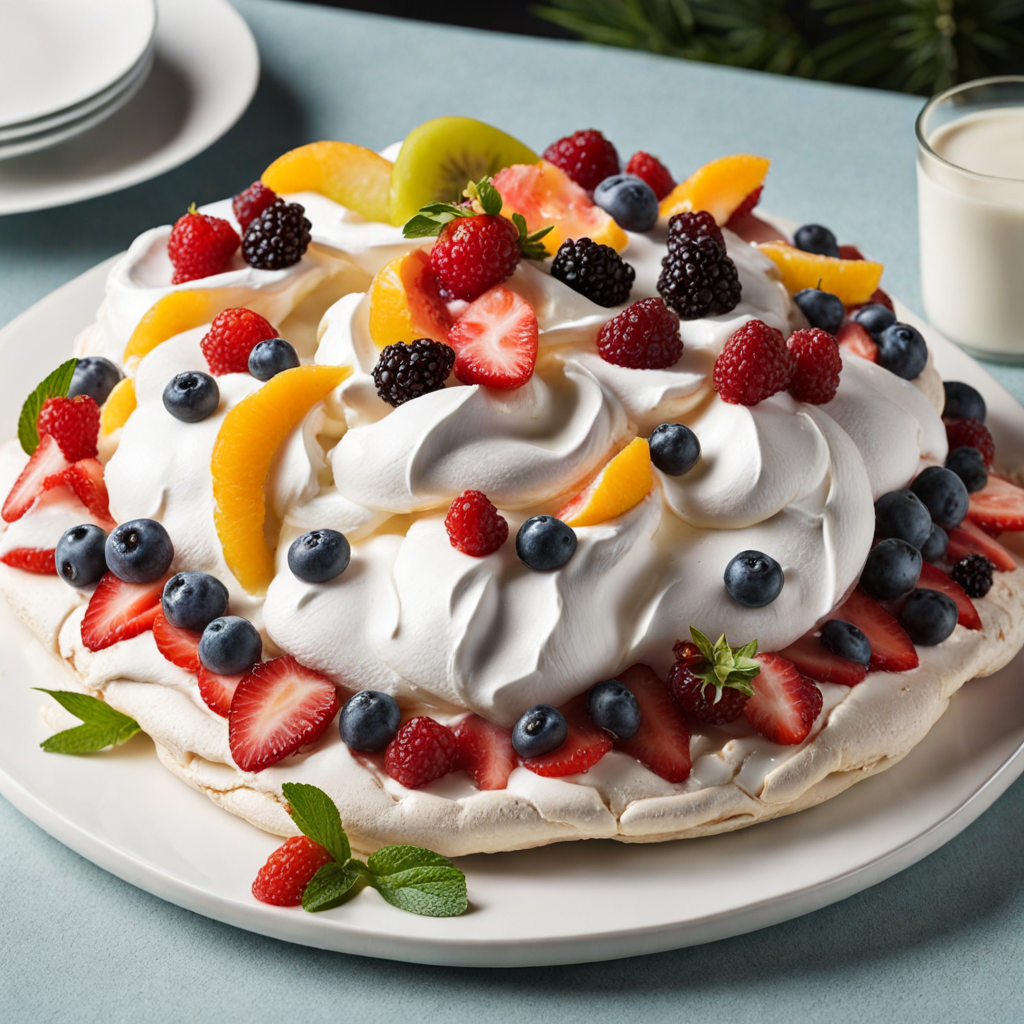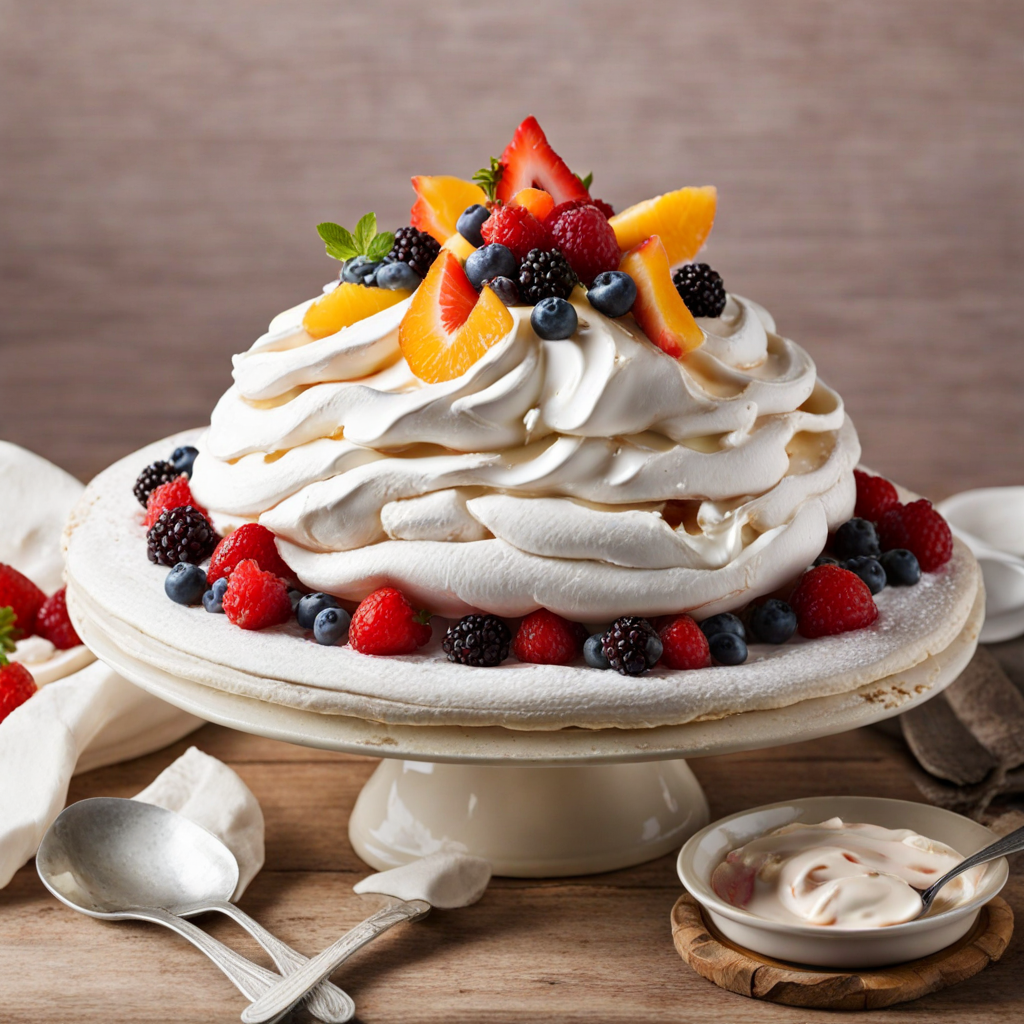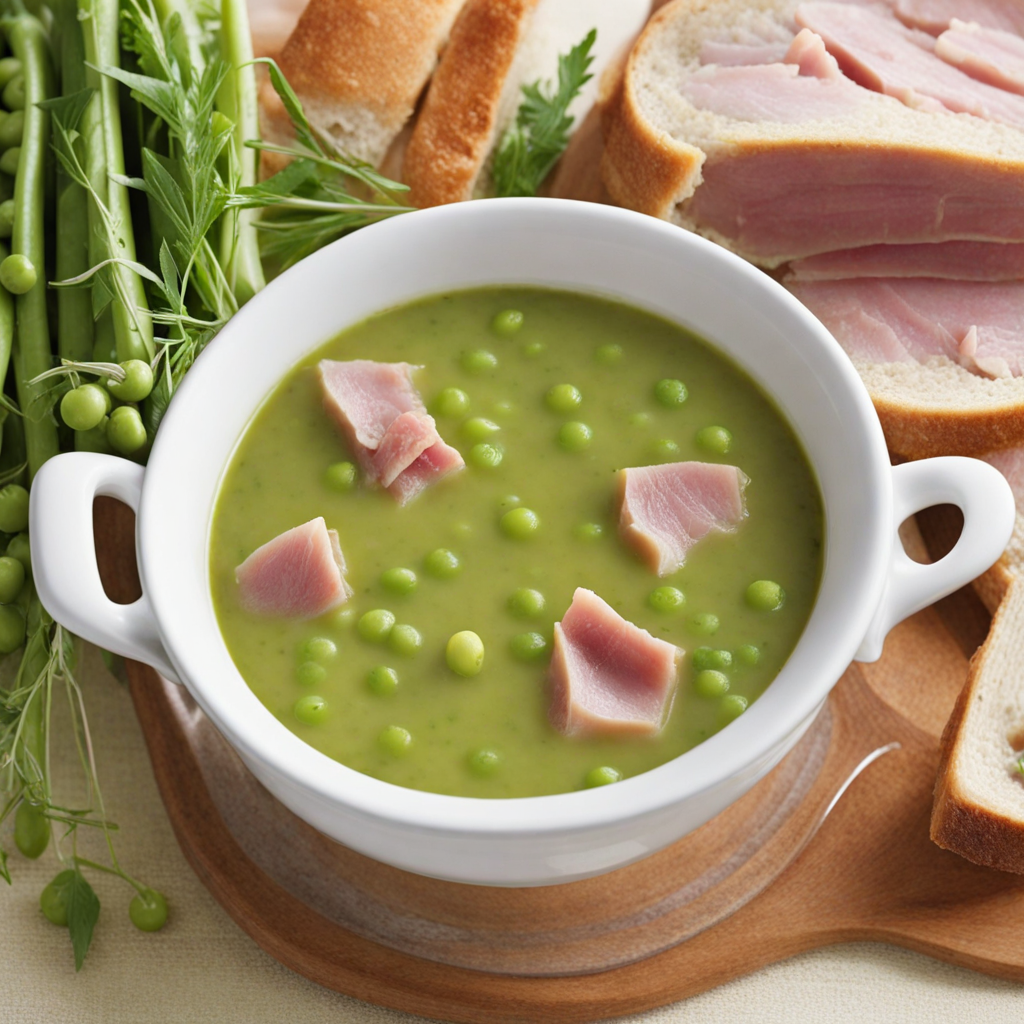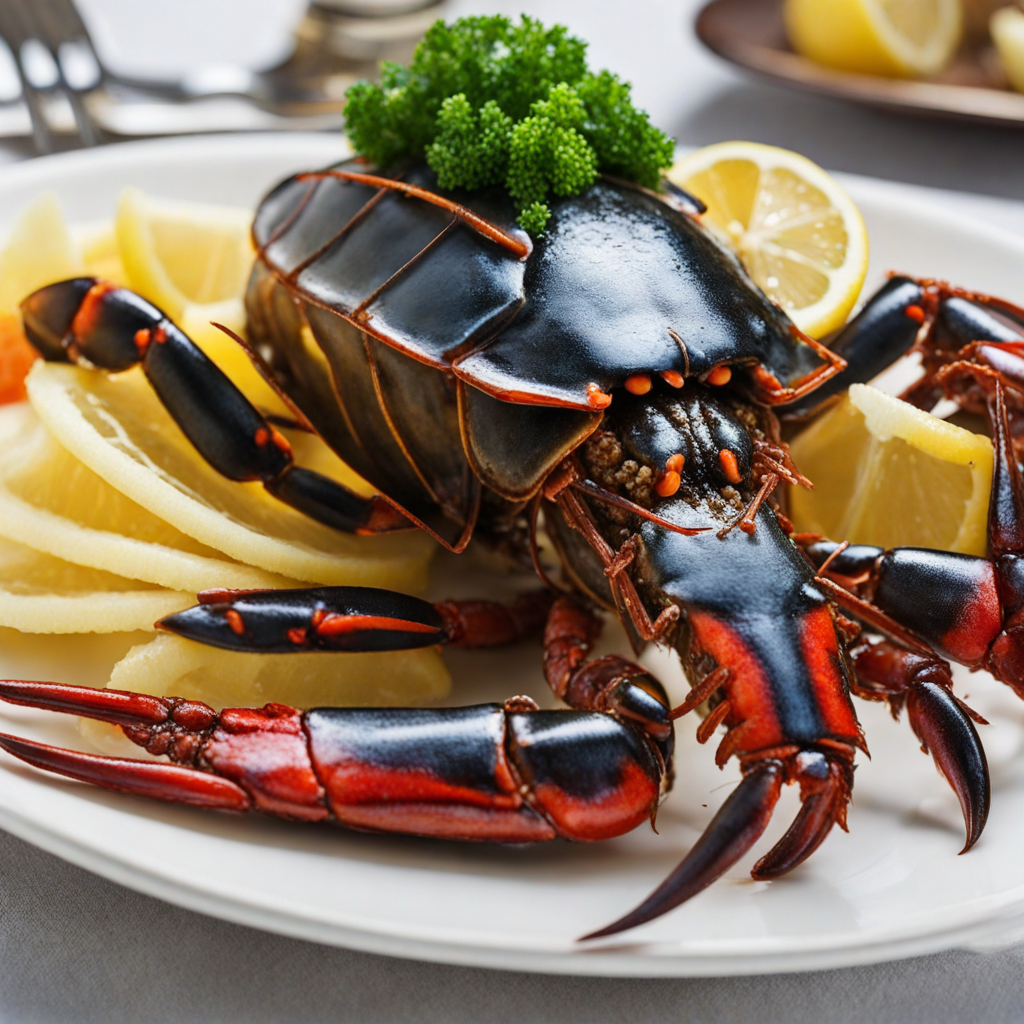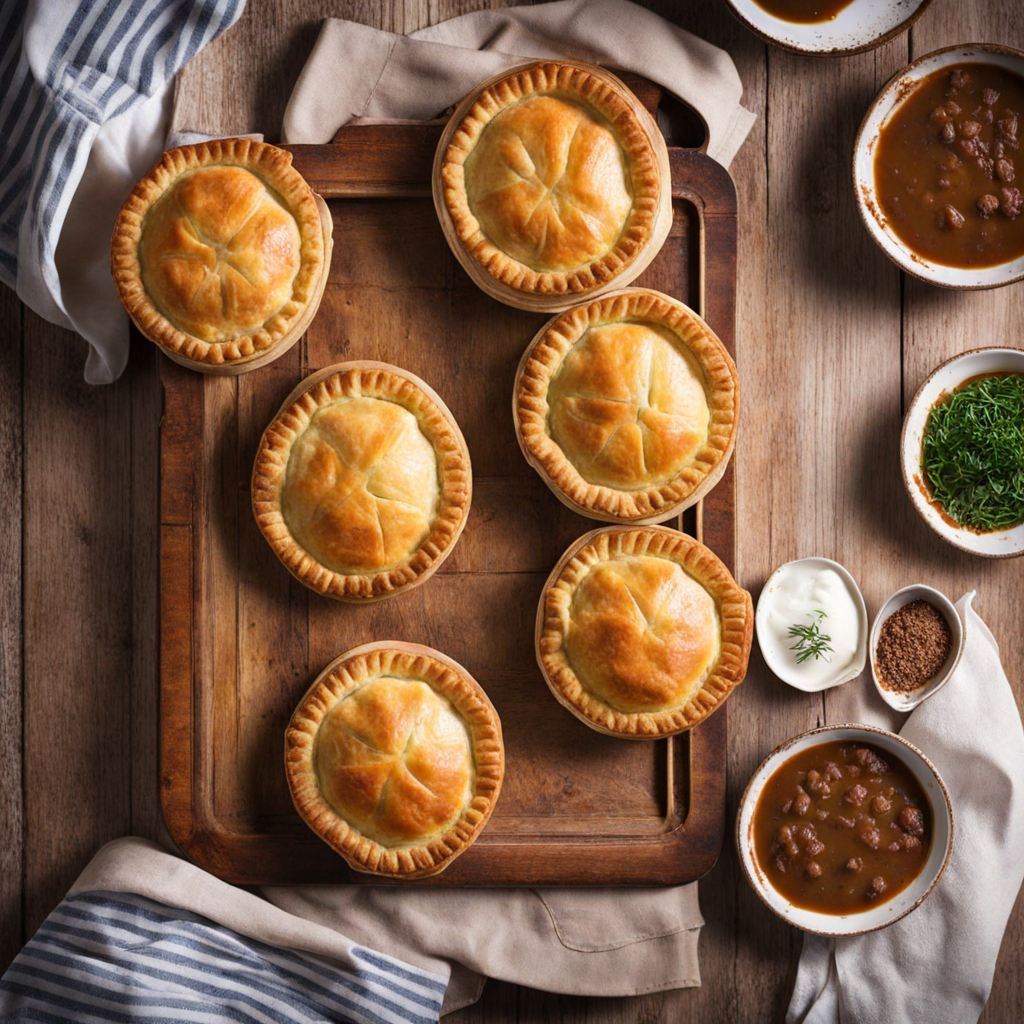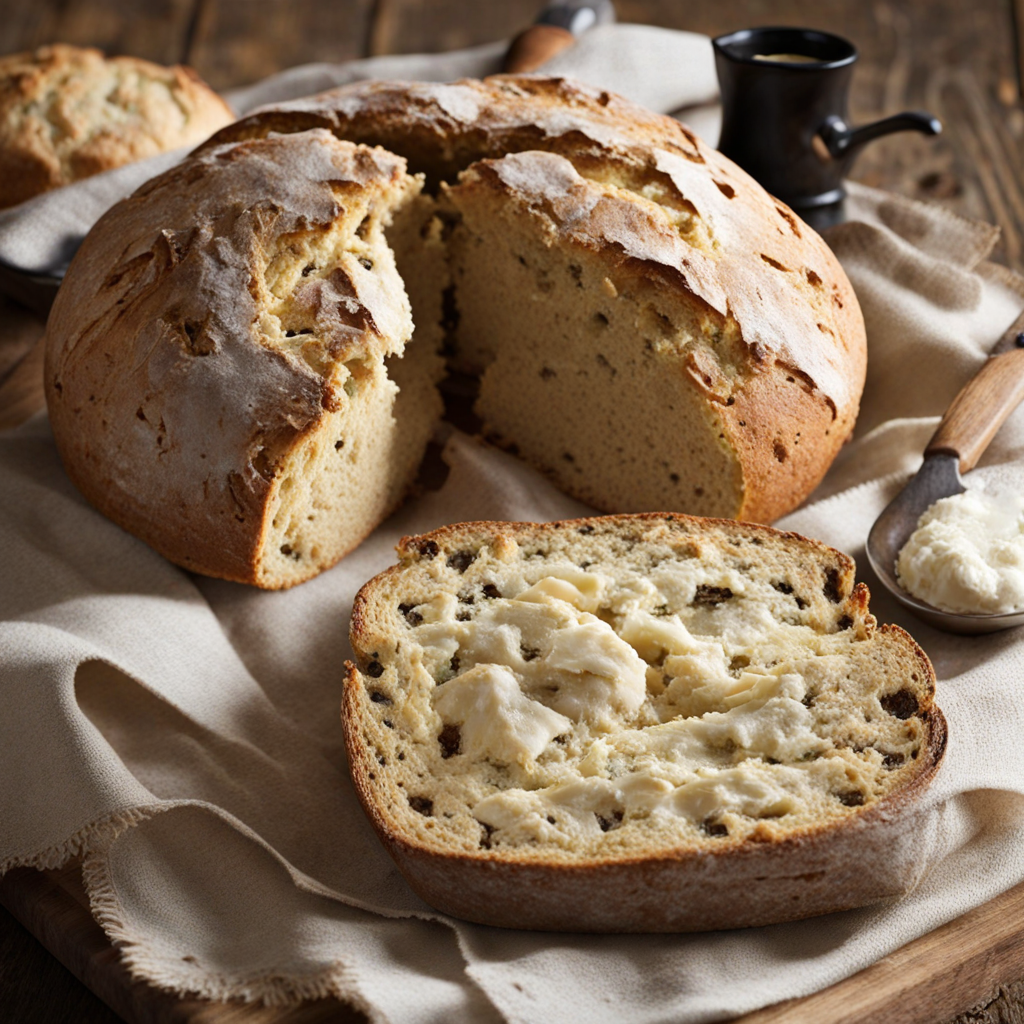Pavlova
Pavlova is a delightful dessert that embodies the essence of Australian culinary creativity, characterized by its light and airy meringue base. This iconic treat features a crisp outer shell that gives way to a soft and chewy interior, providing a textural contrast that is simply irresistible. The meringue is typically made from whipped egg whites and sugar, which are gently baked to achieve that perfect balance of crunchiness and softness. The subtle sweetness of the meringue creates a blank canvas that allows the toppings to shine through, making Pavlova a versatile dessert loved by many. What truly elevates Pavlova is the generous layer of whipped cream that adorns its top. The cream adds a rich and creamy element that complements the sweetness of the meringue beautifully. It’s often dolloped on just before serving, creating a luscious and indulgent finish. The crowning glory of this dessert usually consists of an assortment of fresh fruits, such as kiwi, strawberries, passion fruit, and blueberries. The vibrant colors and natural tartness of the fruits not only enhance the visual appeal but also provide a refreshing contrast to the sweetness of the meringue and cream. With its origins rooted in a tribute to the Russian ballerina Anna Pavlova, this dessert holds a special place in Australian and New Zealand cuisine. Its lightness and elegance make it a popular choice for celebrations and gatherings, embodying the spirit of summer and festive occasions. Each bite of Pavlova is a delightful experience, where the crunch of the meringue, the creaminess of the whipped cream, and the burst of fresh fruit come together to create a taste sensation that is both unique and unforgettable. Whether enjoyed at a picnic or as a centerpiece at a dinner party, Pavlova is a dessert that promises to leave a lasting impression.
How It Became This Dish
The Sweet Legacy of Pavlova: A Culinary Journey Through Australia Pavlova, a sumptuous dessert characterized by its light, airy meringue base, topped with whipped cream and an array of fresh fruits, has become a beloved symbol of celebration and festivity in Australia and New Zealand. The dessert's origins, cultural significance, and evolution tell a rich story that reflects the blending of cultures, traditions, and culinary innovation that defines both nations. Origins of Pavlova: A Culinary Duel The exact origins of Pavlova are hotly debated between Australia and New Zealand, making it a culinary point of national pride. The dessert is believed to have been created in the early 20th century, with its name attributed to the famous Russian ballerina Anna Pavlova. In 1926, during her tour of Australia and New Zealand, Pavlova captivated audiences with her ethereal performances, and it is said that chefs in both countries sought to capture her grace in a dessert. The earliest known recipe for Pavlova appeared in a New Zealand cookbook in 1929, attributed to a Wellington chef named Herbert Sachse. Meanwhile, Australian claims to the dessert often reference a creation from the 1930s, where it was popularized by Australian chefs at various social gatherings. The conflicting claims have led to a friendly rivalry between the two nations, with each asserting that Pavlova is inherently part of their culinary heritage. Cultural Significance: A Dessert of Celebration Regardless of its true origin, Pavlova has become an integral part of Australian and New Zealand culture. It is a staple at significant celebrations, including Christmas, birthdays, and national holidays. The lightness of the meringue, combined with the richness of whipped cream and the vibrancy of seasonal fruits, encapsulates the essence of summer—a key reason why it is favored during festive gatherings. In Australia, Pavlova is often enjoyed on Australia Day (January 26) and is a prominent feature at Christmas feasts when stone fruits and berries are in season. In New Zealand, it has a similar status, commonly served at public holidays and family gatherings. The dessert symbolizes not only sweet indulgence but also a sense of community and shared traditions among families and friends. The Evolution of Pavlova Over the decades, Pavlova has evolved from a simple meringue dessert into a canvas for culinary creativity. While the classic version features a crisp meringue shell, soft marshmallow-like interior, and a topping of fresh cream and fruit, variations have emerged that reflect contemporary tastes and dietary preferences. In the latter half of the 20th century, Pavlova began to see regional adaptations. Chefs started incorporating local ingredients, such as tropical fruits like passionfruit, mango, and kiwi, reflecting Australia and New Zealand's bountiful agricultural landscape. This not only enhanced the flavor profile but also celebrated local produce. As culinary trends shifted towards health and wellness in the 21st century, variations of Pavlova began to appear, aiming to cater to different dietary needs. Gluten-free recipes became popular as more people became aware of gluten sensitivities. Additionally, chefs experimented with alternative sweeteners and dairy-free whipped creams, making Pavlova accessible to a broader audience. Vegan adaptations of the meringue, using aquafaba (the liquid from chickpeas), have also gained popularity, showcasing the dessert's adaptability to modern dietary lifestyles. Pavlova in Popular Culture Pavlova's influence extends beyond the kitchen. It has made its mark in popular culture, appearing in cookbooks, television cooking shows, and even social media platforms. Chefs and home bakers alike share their variations and creations, generating a sense of community among enthusiasts who celebrate the dessert. The rise of food photography has also added an aesthetic appeal to Pavlova, as its vibrant colors and elegant presentation make for stunning visual displays. Additionally, Pavlova has become a cultural export, with Australian and New Zealand chefs showcasing the dessert internationally. It has found its way onto the menus of high-end restaurants and trendy cafes around the world, serving as a delicious ambassador of the culinary traditions of the Antipodes. The dessert's rise in global popularity highlights not only its delightful taste but also the rich cultural narratives that it embodies. The Future of Pavlova As societal trends continue to evolve, Pavlova will undoubtedly adapt to meet the tastes and preferences of future generations. The emphasis on sustainability and locally sourced ingredients is likely to influence how this dessert is prepared and enjoyed. Chefs may experiment with seasonal fruits and eco-friendly practices, ensuring that Pavlova remains relevant in an ever-changing culinary landscape. Moreover, the ongoing discourse surrounding its origins will persist, keeping the spirit of friendly rivalry alive between Australia and New Zealand. This debate not only adds to the allure of Pavlova but also serves as a reminder of the cultural significance that food holds in shaping national identities. In conclusion, Pavlova is more than just a dessert; it is a testament to the creativity, pride, and communal spirit of Australia and New Zealand. Its origins, shrouded in a delightful culinary duel, have given rise to a dish that brings people together in celebration. As it continues to evolve and adapt, Pavlova remains a cherished symbol of the sweet life, inviting all to partake in its light, airy, and vibrant legacy. Whether enjoyed in a backyard barbecue or a formal dinner party, Pavlova has secured its place as a beloved dessert that transcends borders, delighting palates and hearts alike.
You may like
Discover local flavors from Australia


